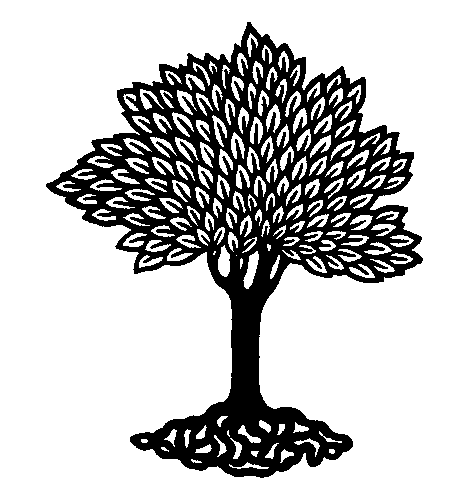
 |
Plant Taxonomy (BIOL308) - Stephen G. Saupe, Ph.D.; Biology Department, College of St. Benedict/St. John's University, Collegeville, MN 56321; ssaupe@csbsju.edu; http://www.employees.csbsju.edu/ssaupe/ |
Linnaeus: Some Notes
Born: May 22, 1707; Rashult, near Stenbrohult, village in southern Sweden
Father: Nils Ingemarsson. He adopted the name Linnaeus upon entering Church. Named after Linden tree (Lind in Swedish). Cleric. Horticulturist. Worked in the vicarage garden. Farmer's son
Mother: Christine; also from a clerical family (her mother was burned as a witch in 1622). They married in 1705.
Early Years:
Sent to school to study theology/ministry.
Did poorly at theology, but great in natural science/math/physics. One of his teachers, Rothman, suggested that he should quit theology studies; he agreed to mentor Linnaeus in botany/natural history.
Medical School:
enrolled as medical student at the University of Lund in 1727 (note: at time medicine and botany closely aligned; and medicine not considered impressive, ministry more prestigious position (more for thinkers).
Linnaeus needed funding; found patron (Kilian Stobaeus). Got along well until Linnaeus left for more prestigious patron.
fall of 1728 enrolled in Univ. of Uppsala (most prestigious)
attracted patrons (Olaf Celsius and Olof Rudbeck)
was eventually, thanks to patrons, appointed as lecturer in the medical school
wrote Praeludia Sponsaliorum Plantarum (on sexuality of plants) - his paper was risque for the times, but it gained wide acceptance
Lapland Collecting Trip (1732)
all good naturalists expected to take collecting expedition (and publish) traveled primarily by foot
May ‑ Oct
may have left because of a love triangle of some sort (see Gilbert)
hated his trip (bad weather, insects, food, travel conditions)
may have fudged trip to one area (Torne Fells) He later said he went 800 miles in 14 days?!
trip sponsored by Royal Society
Post Trip: after he returned, he tutored students (for cash).
Holland Years:
Linnaeus went to Holland. He obtained, in about a week, a Doctor of Medicine degree
golden age for exploration.
obtained patron, George Clifford, rich English banker with large estate and gardens and hypochondriac (Linnaeus perfect)
Clifford treated Linnaeus well
published many papers/books; very productive years. Published Systema Naturae (1735), Fundamenta Botanica, Genera Plantarum
binomial system developed during these years and developed classification
Marriage/Wife:
married Sara Elizabeth Moraea, Spring 1739
daughter of wealthy merchant; didn't trust Linnaeus, made him obtain means to support wife, that�s when Linnaeus went to Holland to get MD degree
In 1738 returned to Sweden from Holland
Post Marriage/Holland:
needed money, served as a physician to treat STD's
returned to Uppsala in 1741
eventually knighted, named himself, Carl von Linne
Personality:
named ugly plants after people he didn't like or admire. e.g., Siegesbeck after spiny, inconspicuous weed ‑ cause didn�t' agree with Linnaeus idea, banned his paper in Russia
not humble: classified taxonomists relative to military with ranks relating to importance; Linnaeus was general
anonymously wrote positive reviews of his own works
tried to swindle scientific society for traveling expenses
enormous self confidence; prodigious ego
great tenacity, single-mindedness of purpose
showed humility before God, but arrogant with peers and others
Contributions:
founded binomial system
developed and popularized system of classification (sexual system)
named and described plants to 1753
clear terminology for plant description
provided rules for naming plants
Notes:
parallels between Darwin and Linnaeus (trips, ministry)
Prevailing paradigm before Linnaeus: species fixed, no evolution; nature was God's creation; moral lessons in nature (natural philosophy).
good teacher; 23 students (about half died on their journeys)
References:
Gilbert, Bil. The obscure fame of Carl Linnaeus. Smithsonian?
Gould, Stephen Jay (1995) The anatomy lesson. Natural History. December, pp. 10-15.
Gould, Stephen Jay (1993) The sexual politics of classification. Natural History. November, pp. 20 - 29.
Gould, Stephen Jay (1993) The first unmasking of nature. Natural History. April, pp. 14-21.
Koerner, L (2001) Linnaeus: Nature and Nation. Harvard University Press, Cambridge.
Moore, R (1997) Linnaeus & the Sex Lives of Plants. American Biology Teacher 59(3): 132.
Newton, Douglas (1986) The World View of Linnaeus. Journ. Biol. Educ. 20 (3):176‑178.
Schiebinger, L (1996) The loves of plants. Scientific American 274: 110 - 115.
Tippo, O and W. Stern (1977) Humanistic Botany. WW Norton, NY. Chapter 4.
|
| Top | Plant Tax. Home | SGS Home | Disclaimer | |
Last updated:
08/20/2007 / � Copyright by SG
Saupe